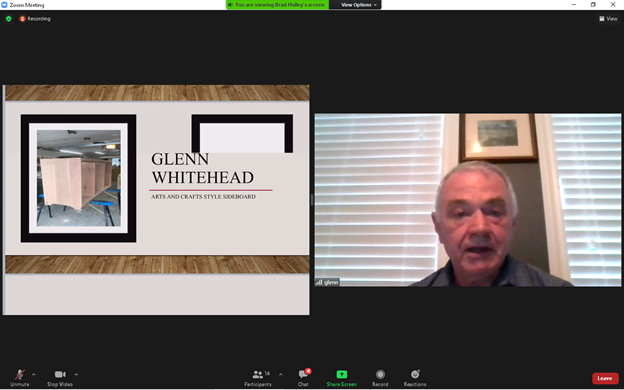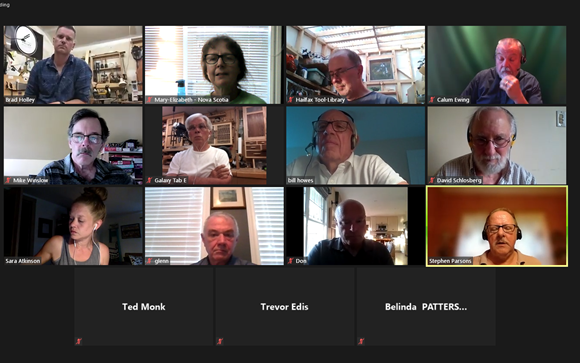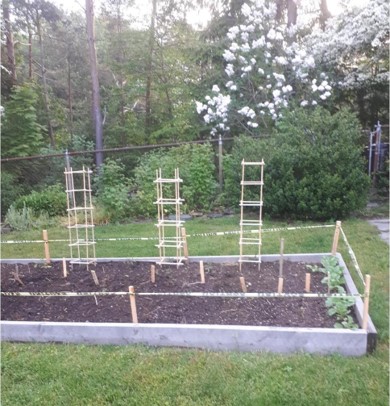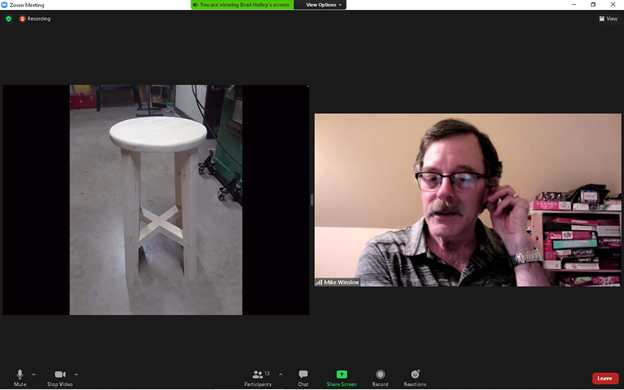In Attendance
Gary Dumas, Trevor Edis, Calum Ewing, Brad Holley, Bill Howes, Ted Monk, Mary Elizabeth O’Toole, Stephen Parsons, Don Shubaly, Dave Schlosberg, Glenn Whitehead, Mike Winslow,
Guests: Sara Atkinson, Halifax Tool Library rep
Resource Intro: Halifax Tool Library
- Focus on tool literacy and access as well as getting people to use underused tools
- Occasional workshop type sessions that focus on learning tools rather than completion of a project
- Looking for people to do training seeking finding to offer small Per diem for teachers
Q & A
David S – What about insurance?
HTL: only have Directors and operators insurance – no insurance for people injuring themselves by using the tool.
Stephen P. -What is your financial model?
HTL – Revenue mostly from membership – currently at about 107 members. There is moderate fee for late return
- most popular membership level is $75 / year with separate for classes, programs and we are planning to roll that into one package
- Intro membership – punch card for 3 visits to try it out
- Organizational membership – paid for profit ($150 for 4 team members) and free for non-profit
- Community membership – low pay or free depending on means – don’t want to put money over access and looking for better access conduits
Always looking for experienced volunteers and connect with other organizations – first night open after being closed for a month
Our ‘Saftey Second’
Stephen – In the past few weeks, doing several multi-station projects where you are working on numerous machines. Reminder to take a minute between steps to think about the function – not just going through a routine – you get a little familiar with the steps and start taking shortcuts
We know how quickly something can happen so want to encourage people to take a step back whenever moving to new machine / station
TIP: Stop. Think through what you are doing at each station to ensure safety.
Guest Presentation – Sara Atkinson
Graduate of the NSCC Heritage carpentry – 2 year program and have been working for about a year
Wooden window restoration
not too many people have an appreciation for wooden windows –but in registered historic building in Halifax are required to repair if possible rather than replace
Bill: in the course did they show you how the windows would have been made at the time
Calum: What criteria do you to decide if you can repair or if you need to replace.
Sara: If there is one joint that can be repaired, I will repair but usually if two on one side, will replace – repair whenever possible. When there is rot, not much you can do about that so usually recreate
Don: Do you give thought to trying to improve efficiency or are you bound by original codes
Sara: When restoring, we can keep to original guidelines (there were no codes). Single pane window or aluminum close to the same efficiency. We do use a seal that they wouldn’t have used at the original time.
Special Projects
Dave Schlosberg
Headboard project for daughter and husband
- looked at several commercial projects and then modified
- designed to be 4 panels
- Used blind doweling jig
Glen Whitehead
Pr oject for more storage space in the kitchen
oject for more storage space in the kitchen
Hand planed – mortised and tenoned all by hand
Little finicky to get just right
Built with red oak – secondary wood pine – slots, rails, sides
Drawer floats in the runners – dados in the runners
Everything flush mounted so trying to get everything exact on the reveal.
Handles from boutique in Kingson
mortice and tendon on the main – top rail the biggest challenge – ended up screwing in
Door construction, again all done by hand. Some of the oak had flaws in it – added some cherry butterflies for a decorative piece – finished door – can see the through tenon clearly and One in the bottom extended right through
Question – what is the finish?
- Glen: I make my own – 1/3 linseed 1/3 turpentine 1/3 spar varnish (3 coats)
- Final coat just linseed and spar varnish
- This one has a semi matte finish
Show & Tell: 2×4 Challenge
Tomato cages – 5/8th in strips – a lot of kindling – glued them up with tight bond but quickly found better to tie up with string
Brad – expect your expectation for the tallest tomatoes might be fighting words for some in the group
Had to go through about a third of the stack at kent to get a straight wood for this project
Cut ¼” strips about 2 feet long and ripped remaining pieces in half and laminated together – a few slats had to be rejected for knots in certain locations
Determined length but the length of possible clear strips
Boiled linseed oil for coating
Quarter inch roundover bit to make them all rounded
With left over pieces, glued some back together , used a piece of ½” hardware cloth for basket
Mike Winslow
Wanted to make something practical – ended up with about ½ in of wood – used home depot bucket for shape of the lid – fit in a bolt with screws – in the sample, just cut the
Legs are 22 inches – might put on a micro poly
5 degree slope on the legs – helps make secure base
Calum Ewing
Made a garden trug for the garden with an unusual angle for the handle — easy access for carrying harvest veg
After finishing the original design, looked at all the pieces leftover and thought there could be another one there with the scrap pieces – and a different design
Stephen Parsons
Stephen decided to carry on the ‘virtual’ theme of this year’s meetings with a virtual 2×4 project. He offered plans he created for past 2×4 challenge projects, which could as easily be made in any wood for a more polished project.
Next Meeting
Tuesday, September 14, 2021 (In person if possible, virutal if necessary. Watch for updates)
September Challenge: How I build my summer vacation.
This content is restricted to AWA members. If you are an existing user, please login. New users may register below.






